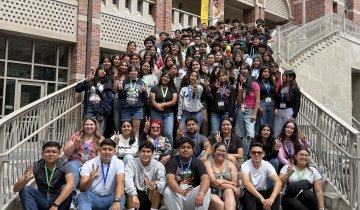A new school year is here; are you ready? With the beginning of the academic year, many educators are preparing for the inevitable shift in their students’ needs from the more relaxed summer months. Parents of transgender, gender-diverse and nonbinary students are of particular note in this preparation cycle, as summer 2023, unfortunately, was different from those in the past. As of August 2023, 351 judicial bills focused on anti-trans legislation (147 of which pertain to schools) have been passed nationwide. Although the Supreme Court ruled in Bostock v. Clayton County that sex discrimination includes sexual orientation and gender identity in enforcing federal law, the fight against discrimination and hatred has taken a new turn. School districts have continued to outlaw books, conversations and learning activities based on everything from gender expression to accurate histories of our nation’s racial inequities.
Unfortunately, students have not been immune from this hatred. Whether they are in elementary, middle or high school, these young people see it. Whether they live in supportive or unsupportive households, they hear it. Whether they are trans or nonbinary themselves or have close trans or nonbinary friends, they are no stranger to the discriminatory practices flying through our school systems, courtrooms and policymakers’ offices. Whether it’s TikTok or Instagram, their favorite YouTube channel or the billboards they see, it has become increasingly difficult to be a kid, to experience moments of invalidation and not know how to process them. In 2022, the National Association for Mental Health reported, in addition to children still processing their experiences of the pandemic, rates of childhood anxiety and depression are slowly increasing. Further, many transgender, nonbinary and gender-diverse youth live with gender dysphoria, an experience of varying levels of discomfort between the gender with which they identify and their physicality.
For some of our gender-diverse students, school has been a place of safety where they can find resources, friends and adults to support them through this challenging sociopolitical climate. Having resources in your back pocket is always a good idea, even when your students “seem fine.” The following tips can help:
1. Talk to students. As educators, sometimes we go into “fix it” mode. Unfortunately, there are parts of our world that you can’t fix right now. So, start with connecting with your students and validating their feelings. Sometimes, feelings don’t need to be fixed—just valued. When young people feel supported in their feelings and in establishing a connection with adults, their nervous systems find balance and their fear decreases. Adult problems are hard for brains that are not fully formed to process (Pozzi et al., 2021). Validating students’ experiences helps provide extra support to their amygdala, the part of the brain most responsible for the regulation of emotion.
2. Help students find courage and resilience. Highlight for students the advances made by transgender and nonbinary people in the past and present. Emphasize the people in our culture who have come out and made steady progress in dismantling systems of inequity. This can be done through a trip to the library, by creating an assignment in which students connect with online LGBTQ+ archives or by watching a documentary together. (Disclosure, directed by Sam Feder, on Netflix is a good one.)
3. Assist students in taking care of themselves. Help your students recognize that, although it can be helpful, scrolling Instagram may not be beneficial for their mental health. Even if your students have a lot of followers who are affirming of gender diversity, there are lots of battles and comments that can be dysregulating. Encourage a social media break with your students’ caregivers. Help students limit exposure to media focused on anti-trans legislation, and encourage them to begin tracking their screentime.
4. Maintain their social support. Remember that although educators want to provide consequences for broken rules and/or behavioral problems, we need to do so thoughtfully. It may be OK for your students to miss a social event, but make sure that you do not completely cut them off from their support groups. For some transgender and nonbinary young people, their community and the people who matter to them are not just friends but a coping mechanism. Find ways both to enforce boundaries and to help your students maintain connections with their support networks.
5. Create a toolbox. Skills to help with emotional regulation look different for every young person and can be co-created with them. Drawing, skateboarding, a walk around the block, going to the gym or park, baking cookies, journaling, dance breaks to their favorite song—the list goes on.





